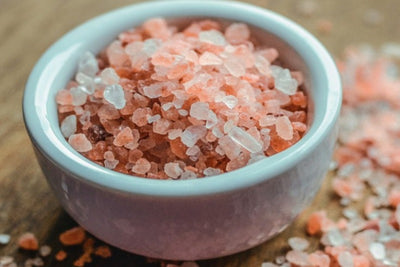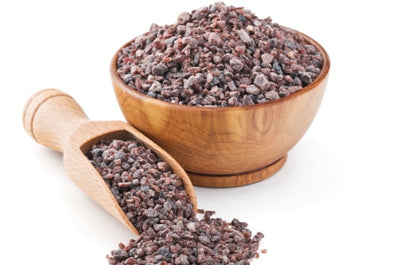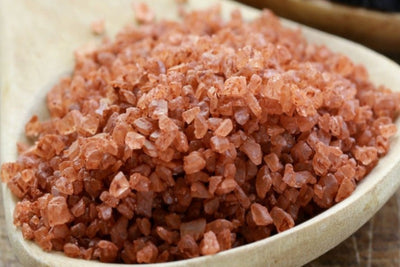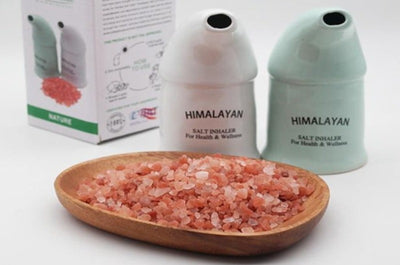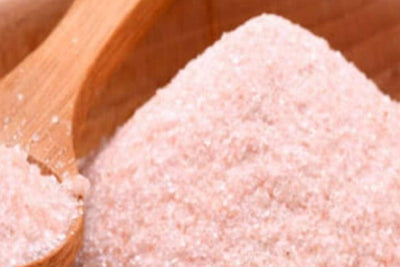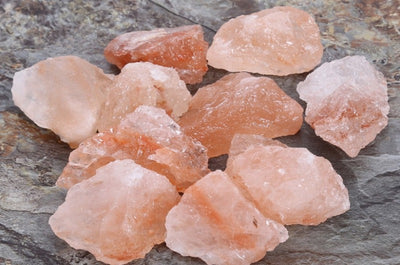Himalayan Salt Vs. Table Salt
What the difference between Himalayan slat and table salt
Most of the people of the 21st century believe in complex works and decent earnings. In the rat races of life, they often forget themselves and hardly get time to take care of themselves.
The hard work and no rest make them easily vulnerable in front of today's world's various health issues. Some of the people and professionals consider Himalayan salt to be an aid to the problems.
This article will get to know the positive and negative sides of Himalayan salt and regular table salt. Let's find out which salt is more reliable in terms of health!
If you are looking to purchase an unique selection of Himalayan salt be sure to visit our Himalayan salt page

Himalayan salt Vs. Table salt Sodium Content
Himalayan salt mainly comprises sodium chloride as its Content. The sodium present in the mineral salt is what gives it a salty taste.
Several types of research on Himalayan salts conclude that Himalayan salt has got not only sodium chloride as its crucial component; you would also find traces of several other elements in the mineral rock salt.
Himalayan pink salt has got 84 traces of other minerals and elements in it.
The accumulation of more than one element on the rock salt particle makes it pink in color. The origin of Himalayan salt is from the Khewra salt mine, one of the oldest and largest salt mines globally.
Khewra is a place in Pakistan whose salt mine results from evaporating water bodies from the past centuries.

Himalayan pink salt has a few vital elements like calcium, potassium, magnesium, and iron besides sodium. Detailed research will tell you the element and mineral content in Himalayan pink salts like calcium-1.6mg, potassium-2.8mg, magnesium-1.06mg, and iron-0.0369mg precise.
On the other hand, if you consider the mineral and element content of table salt, you would mainly find sodium chloride in it. Table salt from the salt mines is extracted and purified in every possible way. It originally comes out with sodium content giving it a salty taste.
The purification process on table salt is what gives it a pure white color. The manufacturers artificially add iodine to the table salt, which is not present in the Himalayan salt due to the hand extraction process.
Iodine is one of the essential parts of the human diet as the iodine crisis in the body can lead to several diseases.
There are other elements in small parts in table salt which makes them almost negligible. The contents are calcium-0.4mg, potassium-0.9mg, magnesium-0.00139mg and iron-0.0101mg and sodium-381mg to be precise.

Himalayan salt Vs. Table salt in Baking
If you compare Himalayan salt and table salt in Baking, then it might be pretty tough for you to choose one between the two. Himalayan salt has got traces of 84 different minerals in it, and that is why it is hand extracted and kept without purification processes.
The salt is available in the market, not in regular salt granules in terms of weight. But it comes in the form of big salt chunks or blocks.
If you ever feel like Baking using Himalayan salt, you need to place the food item on the Himalayan salt block directly bake over it. It provides saltiness to the food item and makes it crunchier than usual for other minerals and more prominent granules.
Himalayan salt also works as a taste additive when chefs use their magical skills to sprinkle the salt chunks on the freshly prepared food in the end.
If you consider table salt in terms of Baking, then it might not be a valid option all the time. Unlike Himalayan pink salts, regular table salt remains purified and out of the traces of other minerals.
They do not come in substantial salt blocks but only in small granular form, which you get from any random grocery store.
You cannot bake in high temperatures on table salt blocks or granules as they melt at a faster rate. They do not even work as sprinklers to the dish after cooking.
Himalayan salt Vs. Table salt Vs. Sea salt
You already know the differences between Himalayan salt and table salt in terms of Content and Baking. There is another type of salt present in the market which is popularly known as sea salt.
You can already guess where sea salt originates from. Himalayan salt originates from the salt mine of Khewar in Pakistan, and it does not go through many purification processes.
At the same time, table salt is used to satisfy your taste buds and medical purposes like adding iodine to your system to avoid goiter.
Sea salt is a salt type that mainly originates from the seas. The 21st century uses artificially advanced forms to manufacture sea salt, like using solar panels to evaporate out seawater and get sea salt.
The salt goes through the process of purification and processing for regular use of humans. It does not contain artificially added iodine. The leading Content of sea salt is also sodium chloride.

Himalayan salt benefits Vs. Table salt
If you compare Himalayan salt to table salt in terms of benefits, then you might be able to figure out the better one between the two. Let’s get into the folds of Himalayan salt benefits first:
- Cures Respiratory Problems:
People from the past have claimed that Himalayan salt has traces of several vital minerals and elements. The elements and minerals support human health better than any other salt type in the world.
Even though there is no good research on the medical benefits of pink salt, it cures respiratory tract infection and reduces blockages.
- pH Level:
The human body is alkaline, and Himalayan salt helps maintain the body's pH balance at ease.
- Blood Sugar:
Many people of the 21st century have diabetes or high blood sugar level. If you take Himalayan salt more often, you might regulate your blood sugar level.
Other benefits of Himalayan salt intake are a boost in libido and improvement in sleep quality.
If you consider the benefits of sea salt like improved blood pressure and healthier nerve and muscles, Himalayan salt stands better than table salt. What keeps you waiting? Dive in and shop the more suitable salt now!

